Abstract
Conventionally raised suckling mice were injected intragastrically with 10(5) spores of a Clostridium botulinum type A culture. Botulism was not observed, but 80% or more of mice challenged when 8 to 11 days old had botulinum toxin in the large intestine 3 days later. Mice younger than 7 days or older than 15 days were resistant to the challenge. When in vivo toxin production was started by spores given to 9-day-old mice, toxin was present in the intestine at 1 through 7 days postchallenge but with greatest consistency between 1 and 4 days. Total toxin in an intestine ranged up to 1,920 50% lethal doses as titrated intraperitoneally in adult mice. The dose infecting 50% of a group of 9-day-old mice was 700 (95% confidence limits of 170 to 3,000) spores per animal. Toxin was formed in the lumen of the large intestine; it was not associated with the ileum. Injection of 10(5) spores intraperitoneally into 9-day-old mice resulted in toxin production in the large intestines of 30% of the test animals.
Full text
PDF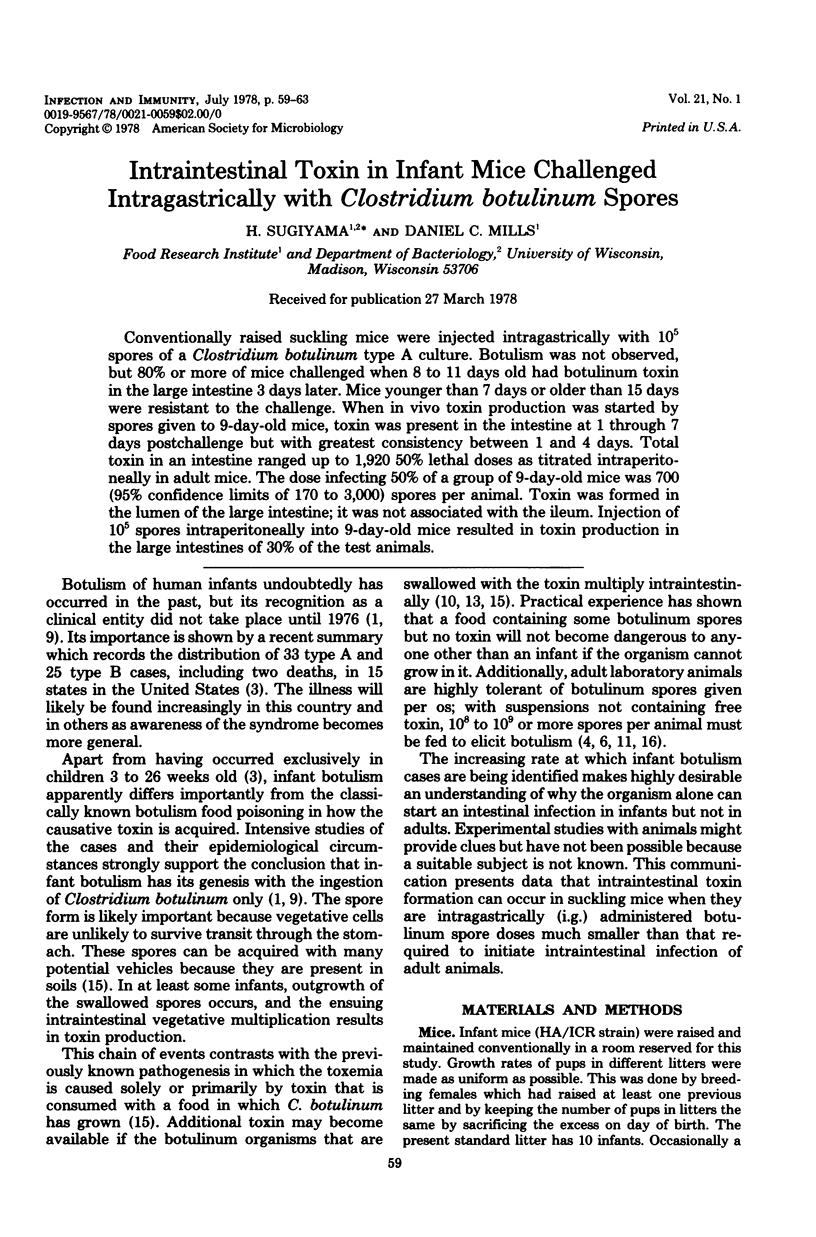
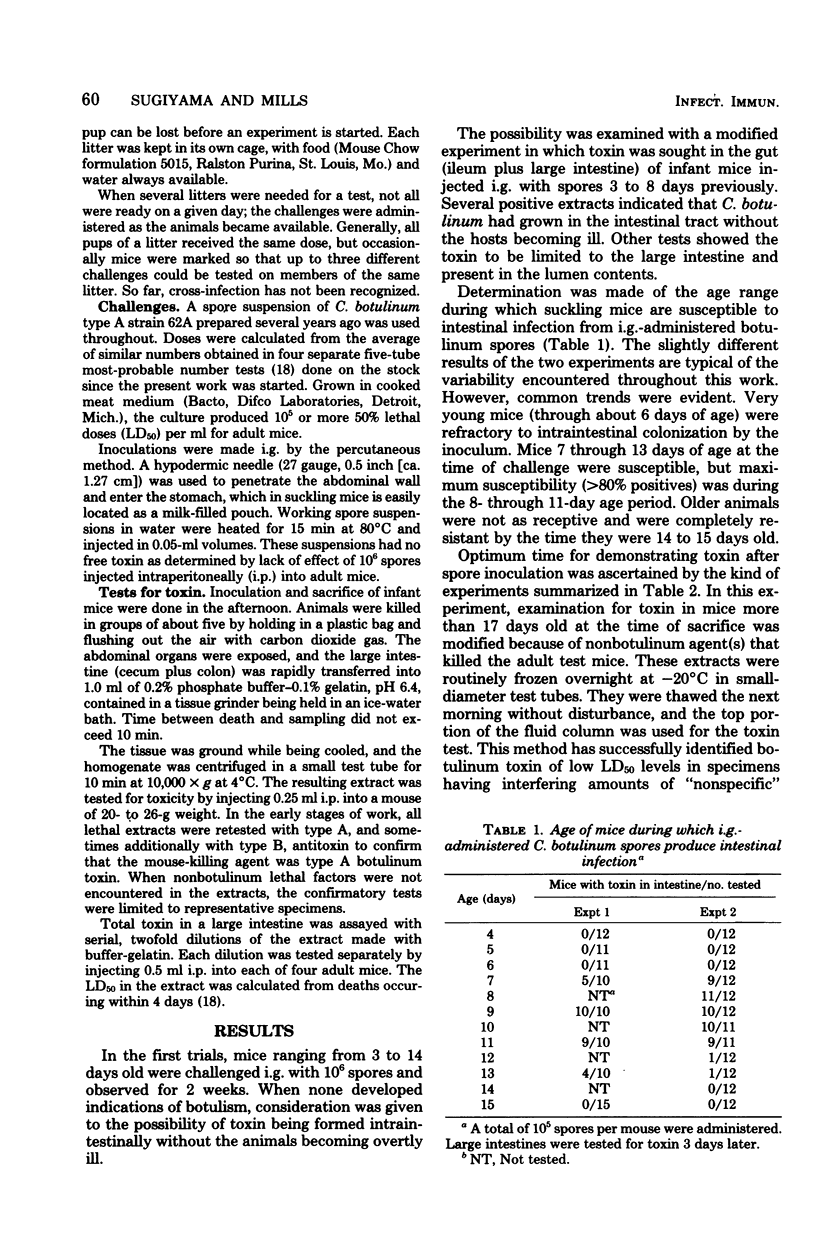
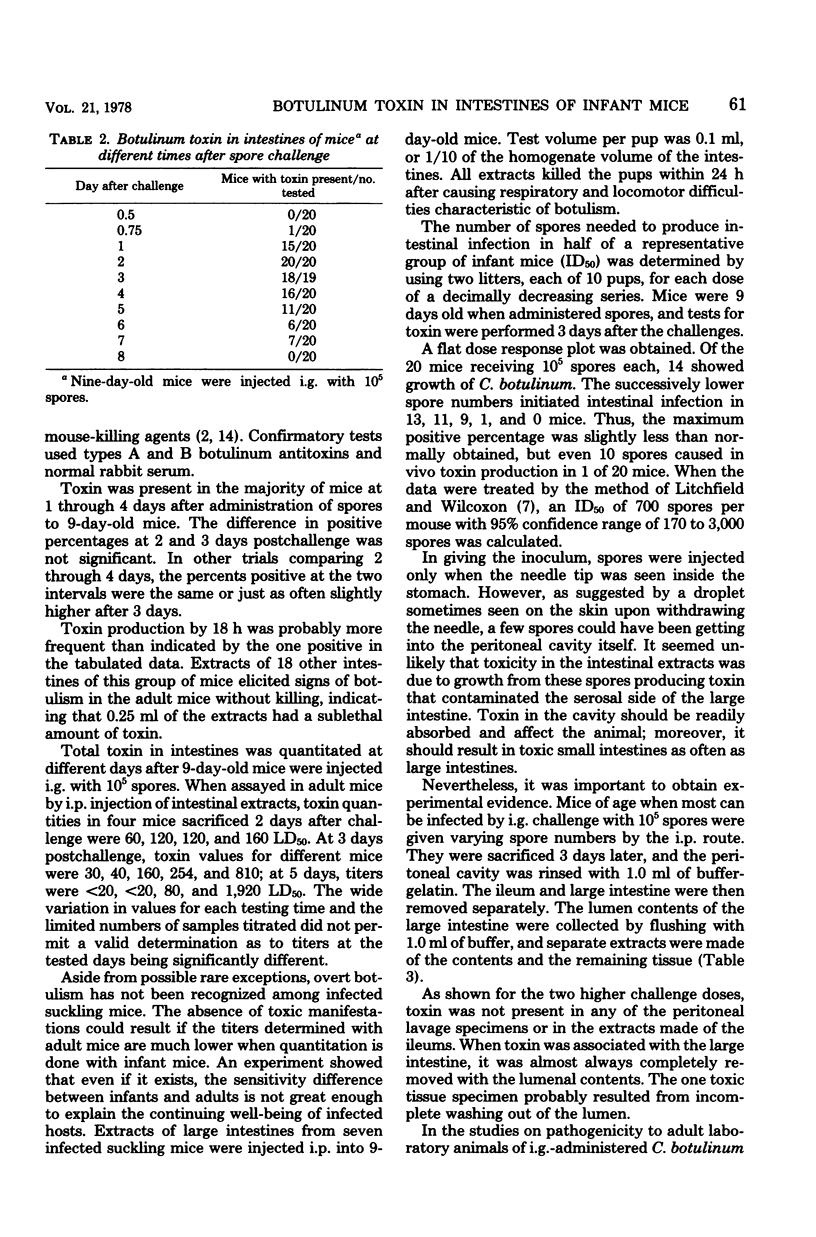
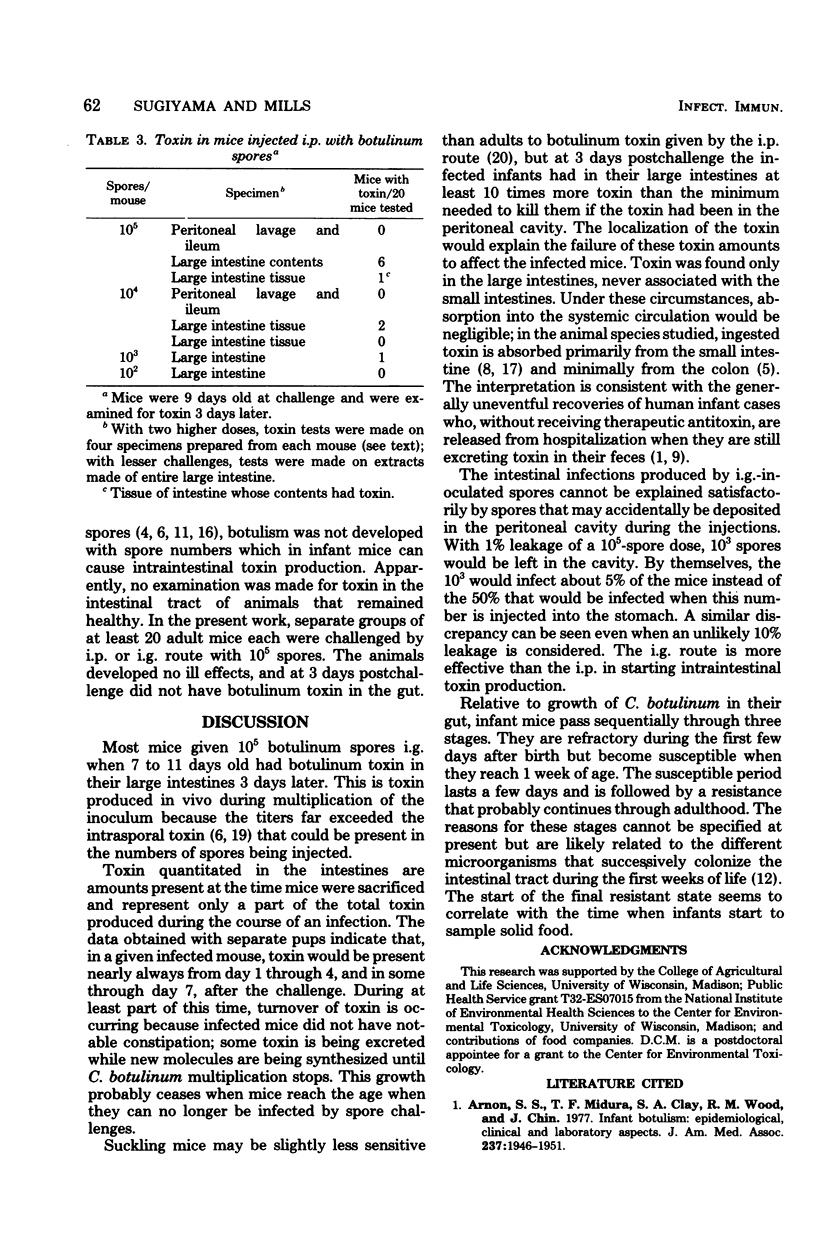
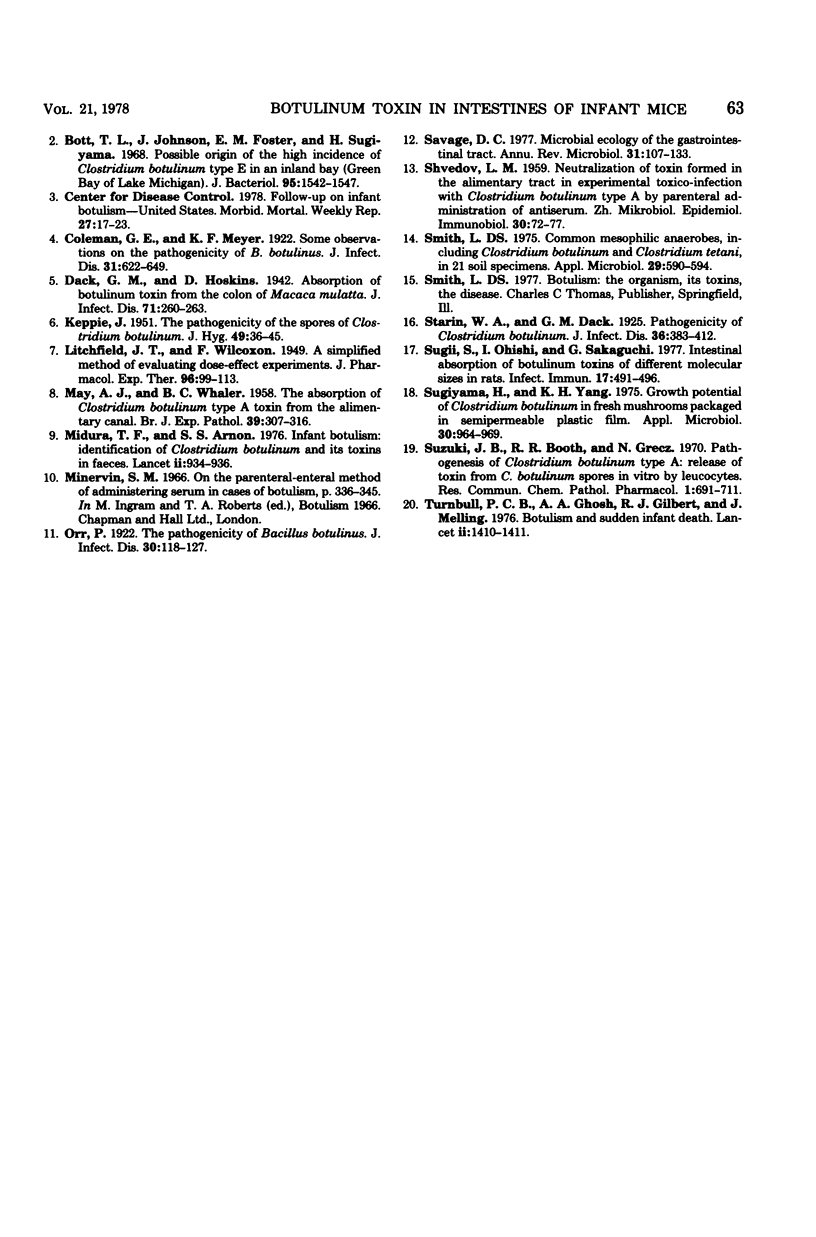
Selected References
These references are in PubMed. This may not be the complete list of references from this article.
- Arnon S. S., Midura T. F., Clay S. A., Wood R. M., Chin J. Infant botulism. Epidemiological, clinical, and laboratory aspects. JAMA. 1977 May 2;237(18):1946–1951. doi: 10.1001/jama.237.18.1946. [DOI] [PubMed] [Google Scholar]
- Bott T. L., Johnson J., Jr, Foster E. M., Sugiyama H. Possible origin of the high incidence of Clostridium botulinum type E in an inland bay (Green Bay of Lake Michigan). J Bacteriol. 1968 May;95(5):1542–1547. doi: 10.1128/jb.95.5.1542-1547.1968. [DOI] [PMC free article] [PubMed] [Google Scholar]
- MAY A. J., WHALER B. C. The absorption of Clostridium botulinum type A toxin from the alimentary canal. Br J Exp Pathol. 1958 Jun;39(3):307–316. [PMC free article] [PubMed] [Google Scholar]
- Midura T. F., Arnon S. S. Infant botulism. Identification of Clostridium botulinum and its toxins in faeces. Lancet. 1976 Oct 30;2(7992):934–936. doi: 10.1016/s0140-6736(76)90894-1. [DOI] [PubMed] [Google Scholar]
- SHVEDOV L. M. O neitralizatsii enteral'no vvedennoi antisyvorotkoi toksina, obrazuiushchegosia v pishchevaritel'nom trakte pri eksperimental'noi botulinovoi toksikoinfektsii tipa A. Zh Mikrobiol Epidemiol Immunobiol. 1959 Jan;30(1):72–77. [PubMed] [Google Scholar]
- Savage D. C. Microbial ecology of the gastrointestinal tract. Annu Rev Microbiol. 1977;31:107–133. doi: 10.1146/annurev.mi.31.100177.000543. [DOI] [PubMed] [Google Scholar]
- Sugii S., Ohishi I., Sakaguchi G. Intestinal absorption of botulinum toxins of different molecular sizes in rats. Infect Immun. 1977 Sep;17(3):491–496. doi: 10.1128/iai.17.3.491-496.1977. [DOI] [PMC free article] [PubMed] [Google Scholar]
- Sugiyama H., Yang K. H. Growth potential of Clostridium botulinum in fresh mushrooms packaged in semipermeable plastic film. Appl Microbiol. 1975 Dec;30(6):964–969. doi: 10.1128/am.30.6.964-969.1975. [DOI] [PMC free article] [PubMed] [Google Scholar]
- Suzuki J. B., Booth R. R., Grecz N. Pathogenesis of Clostridium botulinum type A: release of toxin from C. botulinum spores in vitro by leucocytes. Res Commun Chem Pathol Pharmacol. 1970 Sep;1(5):691–711. [PubMed] [Google Scholar]


